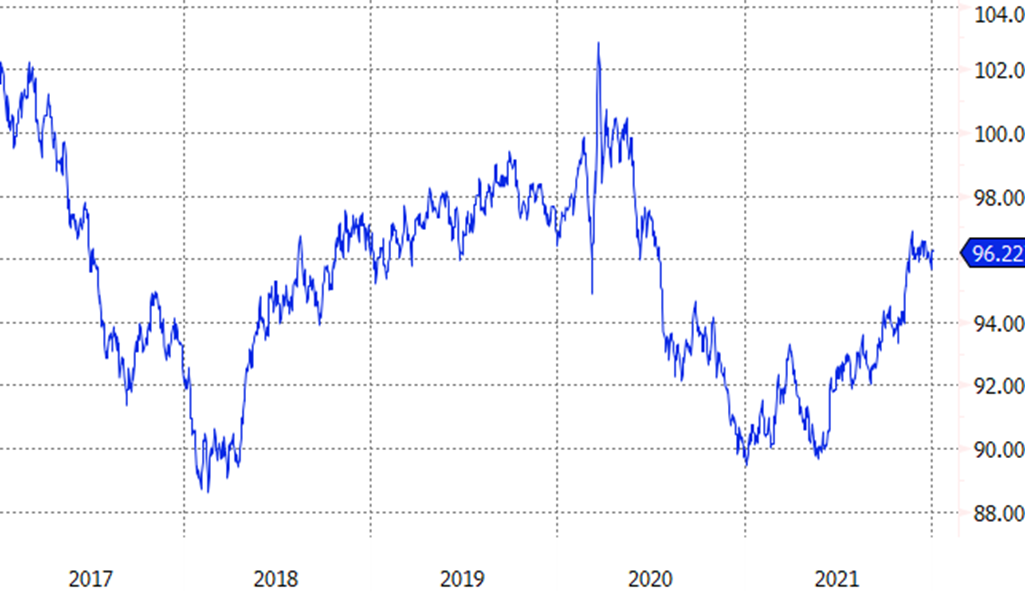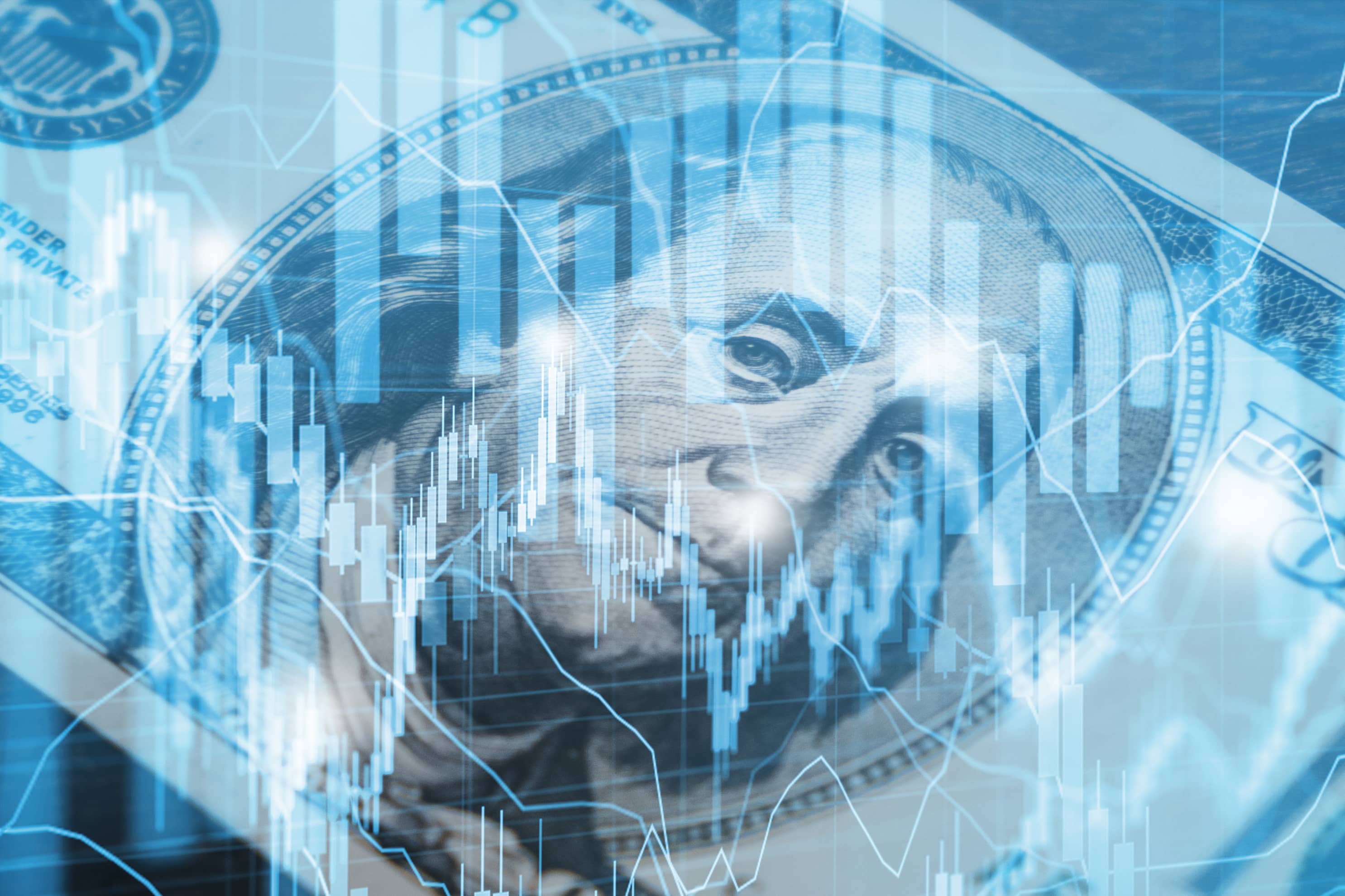Inflation concerns are causing interest rates to spike, lifting the US dollar in the process. The greenback is still one of the strongest currencies around and has been trading at close to the highest levels in 18 months.
The $717m Invesco DB U.S. Dollar Index Bullish Fund (UUP), which tracks US dollar index futures, is up 6.4% over the past year.
Chart 1: US dollar index

Hawkish Fed
The US dollar has been rising in large part due to the expectations that the Federal Reserve will begin hiking interest rates in the coming months. US Treasury yields across the yield curve leapt to multi-month highs this week as it became increasingly clear the latest variant of COVID-19 was less deadly than previous variants.
That makes it likely that the US central bank will tighten monetary policy fairly aggressively this year, first by tapering its bond purchases, then by raising its benchmark federal funds rate.
As the Fed is acting more aggressively than most of its central bank peers around the world, the dollar benefits. Higher rates attract capital into dollar-denominated assets relative to assets denominated in other currencies.
Exporters affected
Even for investors uninterested in speculating directly on foreign exchange rates, currencies still have an impact. That does not necessarily mean investors have to make dramatic moves to their portfolios in response to fluctuations in currencies, but they should understand how such movements may affect their returns.
For instance, a stronger dollar makes US exporters less competitive and reduces the profits of multinational companies that conduct much business overseas.
Similarly, small cap stocks, such as those held in the Invesco Russell 2000 UCITS ETF (RTYS) tend to have less overseas exposure than the large cap stocks held in the iShares Core S&P 500 UCITS ETF (CSPX). That has not really helped RTYS over the past year – it has underperformed CSPX – but it could if the US dollar becomes a bigger factor.
Currency hedging
Another area where currencies play a big part is international equities. Anyone investing in foreign stocks is making at least a tacit bet on currency movements.
For example, the returns for a vanilla, unhedged position in German stocks in a US investor’s portfolio will be influenced both by the performance of the underlying equities and the performance of the euro against the U.S. dollar.
Investors can hedge that risk with a plethora of currency-hedged ETFs available on the market. Currency-hedged products tend to outperform their vanilla counterparts when the US dollar is climbing (and vice versa).
However, keep in mind that it does not always make sense to hedge currency risk, even when you have a strong view on a particular currency. In some cases, the cost to hedge is prohibitively expensive, such as when hedging currencies with high interest rates (i.e., emerging market currencies).
This story was originally published onETF.com
Related articles


